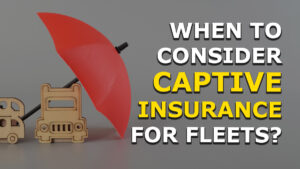
The growth of short-haul delivery for-hire operations with commercial vehicles under 10,001 lbs, often referred to as last-mile, has exploded during the COVID-19 pandemic from online shopping to local food delivery.
While their use has expanded, there seems to be a gap in safety oversight of both drivers and vehicles and the impact of these changes on commercial vehicle safety is unclear.
At a Motor Carrier Safety Advisory Committee (MCSAC) meeting in July 2020, they found that the DOT has very little crash data for smaller delivery vehicles, trucks, and vans. The crash data seems to be on the rise in recent months, but the federal data has no regulatory authority to oversee commercial vehicles that weigh from 6,001 to 10,000 pounds.
WHAT IS SHORT-HAUL AND THE SHORT-HAUL EXEMPTIONS?
The data issue arose as it seemed there were only five small-truck fatal accidents from 2016 to 2018, according to the National Highway Traffic Safety Administration’s Fatality Analysis Reporting System, but Federal regulators are skeptical.
“It’s really been a revelation about how little we know what’s going on” with these types of vehicles. “Even though we may not have any regulatory authority over them, there’s a safety conversation to be had to make sure we have the best available information, and that those who are operating them have the best possible safety practices to ensure that their time on the roadway doesn’t decrease safety.”
MCSAC would like to see more specifics concerning driver impairment, with breakouts of commercial driver’s license (CDL) type, truck class, injury and property-damage-only crashes, pedestrian involvement, etc., including those vehicles weighing less than 10,000 pounds.
FMCSA pursues action items before changing safety regulations
In the July 2020 meeting, the committee agreed to pursue a few “action items” before its next meeting.
They will:
- Search fatality data in the Fatality Analysis Reporting System again that disregards how the data is coded of the 6,001- to 10,000-pound trucks. FARS and MCMIS data might not capture the whole picture of a crash, meaning it might not indicate that it was a last mile delivery, etc. Thus, FARS and MCMIS might not provide enough data to really understand what’s happening with these <10K trucks.
- Obtain injury and property damage information for small vehicles from NHTSA’s Crash Report Sampling System
- Identify and survey the nine states that have the data set to dig deeper into the category
- Identify nine companies to understand industry best practices for recruiting drivers and safety oversight
- Reach out to the new entrant program to find out who signed up for the interstate Department of Transportation number and came back at 10,000 pounds or less.
The group will also be seeking data from the Occupational Safety and Health Administration (OSHA), the National Safety Council (NSC), the Transportation Research Board (TRB), and the American Association of State Highway Transportation Officials (AASHTO) to get clarity on workplace injuries and crashes as they relate to workers and drivers of smaller vehicles.
The committee’s next step is to obtain and analyze as much of this data as possible.
There was no update in the July 2021 meeting, as they focused on driver shortage and retention concerns.
Oklahoma exempts local delivery companies from trucking regulations
While the government investigates safety data, states are figuring out ways to simplify local deliver operations.
A new law in Oklahoma has been signed that provides an exemption for local delivery companies from strict trucking regulations.
The Oklahoma Courier Application Services Act goes into effect Nov. 1, 2021 for any operation that conducts its business in vehicles under 8,000 pounds and have a maximum of two axles, classifying those vehicles as “light property carrier vehicles.”
These companies will be required to have a zero-tolerance drug and alcohol policy for drivers and those drivers must provide a valid driver’s license and proof of vehicle registration and meet minimum age requirements.
Last-mile commercial insurance minimum liability requirements
Independent contractors are typically not covered by workers’ compensation, which raises concerns like what to do if a driver is injured or when you need to renew compensation policies. This is where Last Mile Delivery Insurance comes into play.
According to the FMCSA, the driver must receive minimum liability insurance of up to $300,000 if the freight they are carrying is under 10,001 lbs of non-hazardous material.
The required coverage goes up to $750,000 if it is non-hazardous freight that weighs over 10,001 lbs.
Last-Mile Delivery Insurance provides coverage for:
- Liability
- Physical Damage
- General Liability
- Umbrella/Excess Umbrella
- Cargo
- Occupational Accident
- Contingent Liability Coverage
- Workers’ Compensation
- Commercial General Liability
- Cargo & Warehouse Legal Liability
- Auto Liability/ Auto Physical Damage
- Umbrella/Excess Liability Coverage
- Equipment Floater
AMAZON FLEX VERSUS AMAZON RELAY COMMERCIAL INSURANCE REQUIREMENTS
As a Commercial Truck Insurance Provider, we are fully equipped to assist Last-Mile and Mid-Mile Carriers. We have an insurance solution to assist you no matter what type of carrier you are.
Before you buy personal or commercial auto insurance, let your insurance agent know that you use your car or truck for commercial deliveries. Your agent can work with you to make sure you have the proper auto insurance coverage.
If you have any questions or concerns, please call us at 800.724.5523 or email info@cnsinsures.com.





